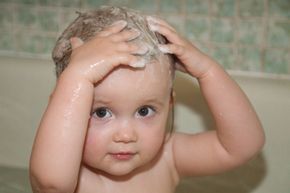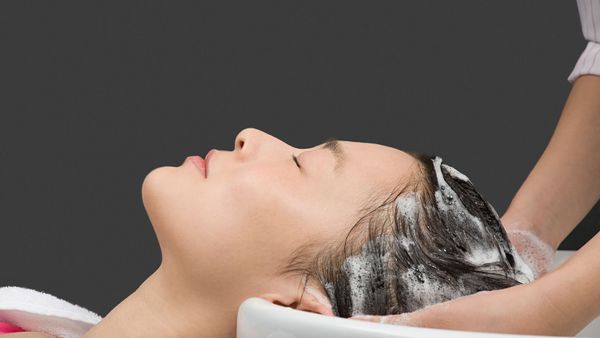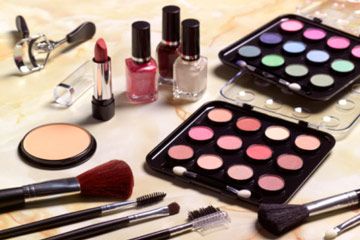It's time for baby's bath, and everything is perfect. The water's lukewarm, the hooded bath towel awaits and the specially formulated baby shampoo is close at hand.
While baby doesn't have Rapunzel-like tresses to shampoo, those three hairs on the top of her head still deserve a good cleaning. And within minutes you've worked them into an impressive lather, thanks to the lavender-scented baby shampoo you picked up at the market.
Advertisement
Just as you're about to congratulate yourself for successfully cleaning a miniature person with all the helpfulness of a wet noodle, panic strikes. A river of shampoo bubbles are making a break for it, leaving the crown of her head for the hills and dales of her eyebrows and -- oh no! -- her eyes. Before you can react, she blinks, sending suds marching across her corneas. And smiles.
She smiles? Where is the howl-inducing sting that comes with shampoo in the eyes? And then it hits you. This is baby shampoo. Tear-free. No tears. A sans howling formulation.
Although you're struck by a sense of relief, you begin to wonder: Why doesn't this shampoo sting her eyes? An adult formulation certainly would (you know that from experience), so why not the baby version?
Odds are, if you were to pose this question at your baby's next playdate at least one person would tell you the secret behind the "no tears" formula: It contains all the eye-stinging chemicals as adult shampoos, plus a desensitizing agent -- Novocain, lidocaine -- to numb the eyes.
Which makes scary sense, except for the fact that it's false. Baby shampoos don't contain anesthetics. If they did, your hands would feel number after washing baby's hair. And babies and children using the products would be at risk for overdose as they absorbed chemicals through the skin or accidentally ingested them as bubbles or bath water. Lidocaine, for example, is particularly toxic to little bodies [source: del Rey].
Advertisement



